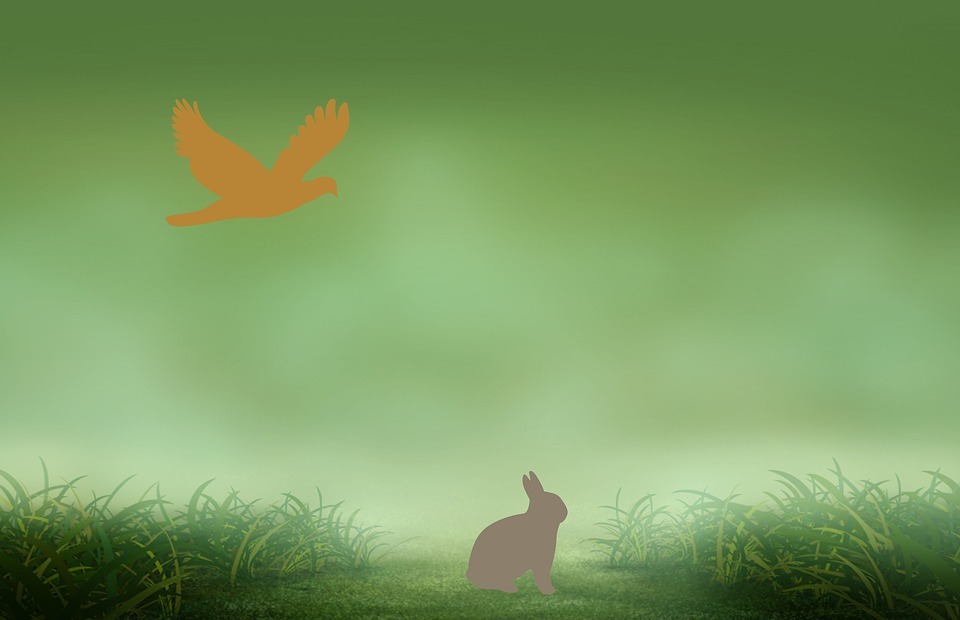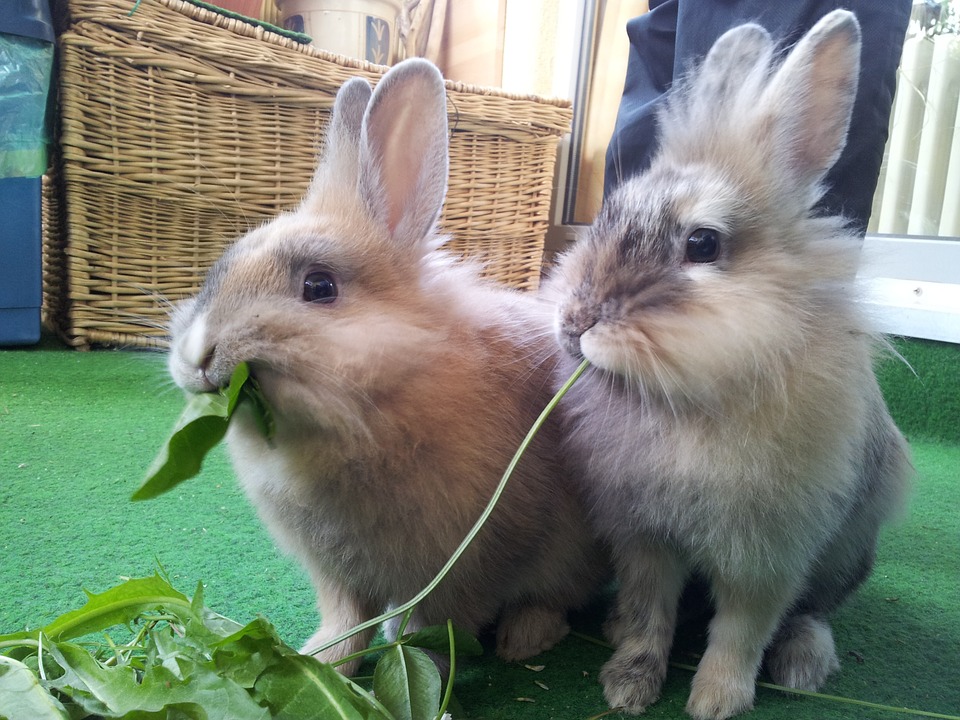This comprehensive guide will explore the crucial topic of providing optimal housing for your beloved pet rabbit. We'll examine the pros and cons of both indoor and outdoor living environments, delving deeper into factors such as safety, health, and your rabbit's individual needs. By exploring different housing options, their suitability, and essential considerations, you can make an informed decision about the best habitat for your furry companion.
Part 1: Understanding Rabbit Housing Needs

1.1. Natural Instincts and Essential Requirements
Rabbits are naturally active, curious, and social animals with specific needs that must be met in their housing. They require ample space for exercise, exploration, and social interaction. A secure and comfortable environment is crucial for their physical and mental well-being.
1.2. Key Considerations for Housing Choice
- Your Rabbit's Personality and Breed: Some rabbits are more active and energetic than others, while certain breeds are naturally more prone to certain behaviours. Consider these factors when determining housing options.
- Your Lifestyle and Living Space: Your available time and space will influence your choices. A busy schedule may require a more convenient indoor setup, while a spacious garden might be ideal for an outdoor enclosure.
- Local Climate and Weather: In regions with extreme weather conditions, providing adequate shelter and temperature control is crucial, potentially favouring indoor housing.
- Predator Risk: Outdoor environments pose a greater risk from predators, requiring secure enclosures and careful monitoring, especially in urban or suburban areas.
Part 2: Indoor Housing: The Urban Rabbit's Sanctuary

2.1. Advantages of Indoor Housing
- Controlled Environment: Indoor spaces offer protection from extreme weather, predators, and environmental hazards. You can maintain a consistent temperature and humidity level, crucial for rabbits' delicate respiratory systems.
- Safety and Security: Indoor environments allow you to control access to potentially harmful items such as plants, cleaning products, and electrical cords, ensuring a safe haven for your rabbit.
- Convenience and Bonding: Keeping your rabbit indoors provides easy access for feeding, cleaning, and interaction. It fosters a closer bond with your pet, allowing for constant companionship and monitoring.
- Year-Round Comfort: Indoor housing eliminates the need for winter protection and summer shade, providing consistent comfort throughout the year.
2.2. Disadvantages of Indoor Housing
- Limited Space: Indoor housing may limit the amount of space available, especially in smaller homes. Rabbits need ample room to hop, play, and explore, with a minimum of 4 square feet of floor space per rabbit recommended.
- Boredom and Lack of Stimulation: Indoor environments can become monotonous without sufficient enrichment. Provide toys, tunnels, climbing structures, and foraging opportunities to keep your rabbit engaged and mentally stimulated.
- Litter Box Management: Managing litter boxes in an indoor setting requires diligence. Proper placement, cleaning, and appropriate litter choice are essential for maintaining a hygienic environment.
- Potential for Destructive Behaviour: Rabbits may exhibit chewing behaviour, especially if bored or under-stimulated. Providing appropriate chew toys and enrichment can help mitigate this.
2.3. Indoor Housing Options
2.3.1. Multi-Tier Cages
- Pros: Space-saving, offers vertical space for hopping and climbing, promotes exercise, suitable for smaller living areas.
- Cons: Can be challenging to clean, requires sturdy construction to prevent tipping, may not provide sufficient horizontal space for larger breeds.
2.3.2. Playpens
- Pros: Large, spacious, provide room for exercise, can be easily moved, offer flexibility in layout.
- Cons: Less secure than cages, require careful supervision to prevent escape, may not provide adequate shelter.
2.3.3. Rabbit-Proofed Rooms
- Pros: Offers the most space, freedom, and enrichment for indoor rabbits, allows for natural behaviours.
- Cons: Requires extensive rabbit-proofing, careful supervision to prevent accidents, commitment to maintaining a safe and secure environment.
Part 3: Outdoor Housing: The Country Rabbit's Realm
3.1. Advantages of Outdoor Housing
- More Space: Outdoor enclosures offer ample room for hopping, running, and digging, catering to your rabbit's natural instincts. Aim for 10-12 square feet of floor space per rabbit with additional space for exercise.
- Fresh Air and Sunlight: Outdoor environments provide access to fresh air and natural sunlight, crucial for vitamin D production and overall well-being. Ensure adequate shade during hot weather.
- Exercise and Stimulation: Outdoor spaces encourage natural behaviours such as grazing, foraging, and exploring, promoting physical and mental stimulation. Provide a variety of plants, tunnels, and hiding spots.
- Socialization with Other Animals: Outdoor enclosures can facilitate safe interaction with other compatible pets, promoting social development and companionship. Introduce animals carefully and ensure compatibility.
3.2. Disadvantages of Outdoor Housing
- Weather Extremes: Outdoor housing exposes rabbits to extreme temperatures, rain, and wind, necessitating careful protection and weather monitoring. Provide shelter from the elements.
- Predator Risk: Outdoor environments are vulnerable to predators such as foxes, cats, and dogs. Secure enclosures with predator-proof fencing, sturdy wire mesh, and secure latches.
- Disease Transmission: Outdoor spaces can expose rabbits to diseases from other animals or environmental sources. Regular parasite control and vaccinations are crucial.
- Limited Access and Control: Outdoor housing may require more travel time and effort for care and interaction, potentially limiting bonding opportunities. Consider convenience and accessibility.
3.3. Outdoor Housing Options
3.3.1. Hutches
- Pros: Affordable, provide shelter and protection from elements, suitable for smaller rabbits or temporary housing.
- Cons: Limited space, can be prone to overheating, require regular cleaning, may not be suitable for active rabbits or long-term housing.
3.3.2. Runs
- Pros: Larger than hutches, offer more exercise space, can be combined with hutches for shelter, provide a dedicated space for exercise.
- Cons: More expensive than hutches, require additional protection from predators and extreme weather, may not be suitable for all breeds.
3.3.3. Rabbit-Proofed Gardens
- Pros: Offers the most space and freedom for outdoor rabbits, promotes natural behaviours, provides an immersive experience.
- Cons: Requires significant investment in fencing and safety measures, careful planning to prevent escape and hazards, requires ongoing vigilance and maintenance.
Part 4: Essential Considerations for Housing Success
4.1. Size and Space:
- Indoor: Provide at least 4 square feet of floor space per rabbit with additional space for exercise.
- Outdoor: Aim for 10-12 square feet of floor space per rabbit with additional space for exercise, considering breed size and activity levels.
4.2. Safety and Security:
- Indoor: Rabbit-proof the environment, removing toxic plants, cords, and cleaning products. Secure doors, windows, and openings to prevent escape.
- Outdoor: Secure the enclosure with predator-proof fencing, sturdy wire mesh, and secure latches. Consider using buried fencing and mesh to prevent digging.
4.3. Temperature Regulation:
- Indoor: Maintain a comfortable temperature between 18-21°C. Avoid drafts and extreme temperatures.
- Outdoor: Provide shade during hot weather, insulation during cold weather, and a sheltered space for your rabbit to retreat to. Consider using heat lamps or insulated hutches for cold weather protection.
4.4. Enrichment and Stimulation:
- Indoor: Provide toys, tunnels, chew toys, climbing structures, and foraging opportunities for entertainment and mental stimulation. Offer a variety of textures, materials, and challenges.
- Outdoor: Offer foraging opportunities with safe plants, a digging area, and safe interaction with compatible pets. Encourage natural behaviours and provide enrichment to prevent boredom.
4.5. Cleaning and Hygiene:
- Indoor: Clean litter boxes daily, change bedding weekly, and thoroughly clean the cage regularly. Use rabbit-safe cleaning products and avoid harsh chemicals.
- Outdoor: Clean the enclosure regularly, removing faeces and uneaten food. Change bedding and hay frequently. Maintain a clean and hygienic environment to prevent disease.
Part 5: FAQs: Clearing the Air
5.1. Can a rabbit live entirely outdoors in the UK?
While outdoor living can be suitable for rabbits in the UK, it requires careful planning and preparation. The UK's unpredictable weather necessitates a robust enclosure with shelter from rain, wind, and extreme temperatures. Ensuring proper protection and regular monitoring is crucial for your rabbit's safety and well-being.
5.2. Is it better to keep a rabbit indoors or outdoors?
There is no definitive answer. The best housing choice depends on your individual circumstances, your rabbit's personality, and the environment you can provide. Consider the advantages and disadvantages of each option and make an informed decision based on your rabbit's needs and your ability to meet them.
5.3. Can I let my rabbit have free roam in my garden?
Free roaming in a garden can be risky due to predators, potential hazards, and the risk of your rabbit escaping. Provide a secure and spacious outdoor enclosure with ample enrichment to cater to your rabbit's natural behaviours.
5.4. How can I tell if my rabbit is comfortable in its environment?
Look for signs of contentment such as relaxed posture, active play, healthy appetite, and regular grooming. If your rabbit exhibits signs of stress, anxiety, or destructive behaviour, reassess the environment and consider making adjustments to improve their comfort.
5.5. Do rabbits need to be socialized with other animals?
While rabbits can thrive as solo pets, socialization with compatible companions can provide enrichment and reduce boredom. Introducing rabbits carefully and ensuring compatibility is essential for a harmonious and safe living environment.
5.6. How often should I interact with my rabbit?
Rabbits are social creatures who thrive on interaction. Aim for at least 30 minutes of daily interaction, including playtime, grooming, and bonding activities.
5.7. What are some common signs of illness in rabbits?
Changes in appetite, lethargy, weight loss, diarrhoea, and respiratory distress are all signs of potential illness. Consult a veterinarian immediately if you notice any unusual symptoms.
5.8. What are some rabbit-safe plants?
Timothy hay, dandelion, parsley, and cilantro are safe and nutritious for rabbits. Avoid toxic plants such as lilies, tulips, and azaleas.
By carefully considering the factors outlined above and implementing these tips, you can create a safe, comfortable, and stimulating environment for your pet rabbit, allowing them to thrive in their new home.
Everyone is watching
-

Do Rabbits Lay Eggs? (The Surprising Truth)
OTHER TYPES OF PETSThis article will unravel the common misconception that rabbits lay eggs, exploring the fascinating world of r...
-

What's a Group of Rabbits Called? (A Comprehensive Guide)
OTHER TYPES OF PETSThis article delves into the fascinating world of rabbits, exploring the various terms used to describe a grou...
-

Can Rabbits Eat Grapes? A Guide to Safe Rabbit Treats
OTHER TYPES OF PETSThis comprehensive guide will explore the safety and suitability of grapes for rabbits, providing detailed inf...
-

Predators That Hunt Rabbits: A Guide to Natural Enemies
OTHER TYPES OF PETSI've always been fascinated by the circle of life, that delicate dance between predator and prey. Growing up ...
-

Are Rabbits Nocturnal Animals?
OTHER TYPES OF PETSThe question of whether rabbits are nocturnal animals is a fascinating one, with a surprisingly complex answer...
